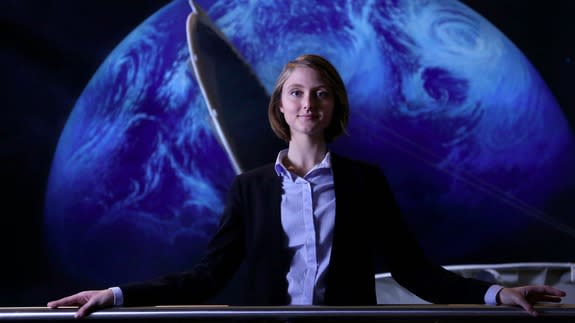Startup helps Aussie students reach the International Space Station

She hasn't even graduated from university, but Solange Cunin is already planning to send some very special cargo into space.
At 23, Cunin is the cofounder of the startup Quberider, which has developed a program for high school students that aims to teach coding and data analysis through the prism of space travel. She's taken the semester off from studying aerospace engineering at the University of New South Wales to concentrate on the project as part of the Sydney accelerator program, muru-D.
SEE ALSO: Report: Android mobile apps still have serious privacy concerns in Australia
Quberider, which had its official launch in February, is scheduled to send a payload containing the experiments of Australian students to the International Space Station (ISS), Cunin told Mashable Australia. On June 24, the package should head skyward aboard a SpaceX Falcon 9 rocket from Cape Canaveral, Florida.
The startup aims to engage students by offering them a very exciting, tangible result for their hard work. "The whole time that they're learning these skills, it's with the mindset they are training for a space mission," Cunin said. "By the end, they develop an experiment they send to space."
The startup has more than 40 schools signed up to the program, which provides teaching materials and hardware for a fee.
Getting the payload to space has proved a challenge. Cunin and her cofounder, Sebastian Chaoui, had to find a launch partner, as well obtain the right legal permissions in Australia. They have partnered with U.S. company, DreamUp, run by NanoRacks, which helps send educational projects to the ISS.
"DreamUp is honoured to bring Australian classrooms into space, literally," Carie Lemack, cofounder and CEO of DreamUp, said in a statement.
At school, students have been developing software that manipulates the sensors of a small module to perform a range of experiments in a space.
"There's been a real variety... we've got people-centric experiments where they're testing the radiation shielding of the ISS," Cunin said.
Others are more whimsical.
"They're developing an algorithm to collect data that will be assigned to notes to make a song out of it. I thought that one was cool," she laughed.
Quberider will load the software into one space-approved sensor module, Cunin explained, which will then undergo further test. When it reaches the ISS, the astronauts aboard will eventually set it up. Once the module is activated, it runs for at least one month in space while sending the experiment data back down to Earth.
For Cunin, working in space research was inevitable, and she knows how it can appeal to young people.
"I begged Santa Clause for a telescope when I was eight. I've still got that telescope," she said. "Even before that, apparently, I was hellbent on being an astrophysicist. Even before I knew what that word was."
When asked if she wanted to one day travel to space herself rather than simply sending the experiments of 14-year-olds sky high, Cunin was definite.
"That's every space obsessive's dream, right? We're all going to live on Mars."
